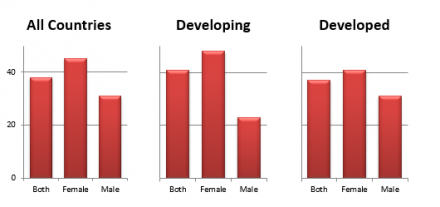The Scope of Pain in the US
- Persistent Pain: 100 million
- (Institute of Medicine, 2011)
- Coronary Heart Disease: 81 million
- (Centers for Disease Control)
- Insomnia: 70 million
- (IOM, 2006)
- Hypertension: ~ 65 million
- (NHANES 2005-2006)
- Diabetes: 24 million
- (American Diabetes Association, 2007)
- New Cancer Diagnoses: 1.6 million
- (American Cancer Society, 2012)
Pain is Prevalent Globally
Image

Reference
Adapted from data from: Tsang A, Von Korff M, Lee S. et al. Common Chronic Pain Conditions in Developed and Developing Countries: Gender and Age Differences and Comorbidity With Depression-Anxiety Disorders. J Pain. 2008(Oct);9(10):883-891
Barriers to Pain Treatment I
Access to any healthcare system
- Rural dwelling
- Urban areas are still underserved
- Insurance coverage
Access to new-generation and opioid analgesics
- Inner-city pharmacies less likely to stock
- Developing countries
Barriers to Pain Treatment II
Access to specialty pain clinics
(Not all PCPs are comfortable managing chronic pain)
e.g., Opioids require:
- extensive documentation
- Risk assessment
- (misuse, abuse potential)
- Pt education; provider education
- Behavioral contracts
- Periodic drug testing
- Vigilance for opioid diversion
Barriers to Pain Treatment III
- Provider attitudes lead to disparities
- English as a second language
- Race & ethnicity
- Sex
- Vulnerable populations: prisoners, victims of abuse
- Socioeconomic status
- Age
- Cognitive Impairment
- Health literacy
Think-Pair-Share
How will your personal experiences with pain affect your pain treatment practices?
Faces of pain look different. Who are you most/least likely to treat for pain?

